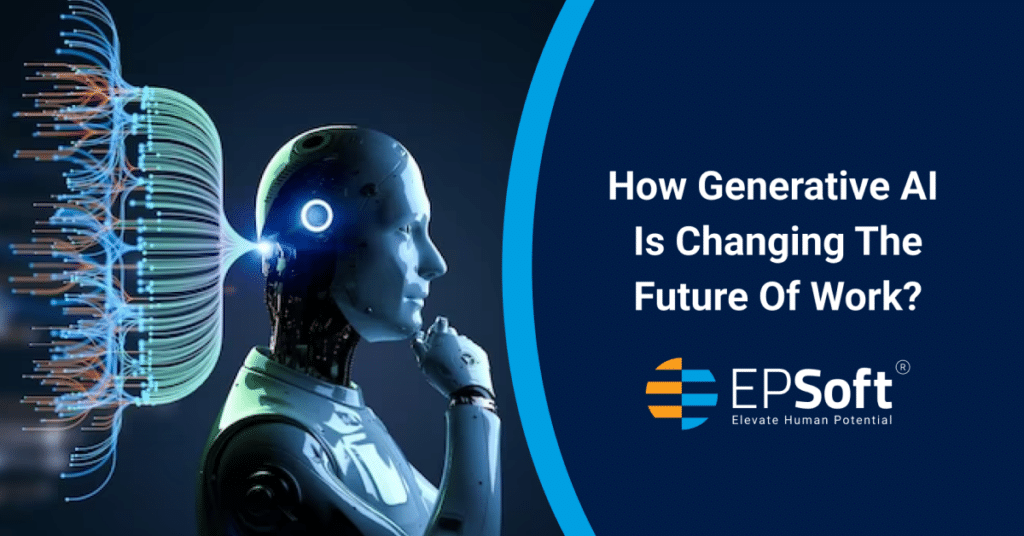We stand at the precipice of the next industrial revolution, where technology is reshaping the landscape of work, ushering in unprecedented levels of efficiency, productivity, and innovation. At the forefront of this revolution is Generative AI, a groundbreaking force poised to transform content creation and management across various sectors. In this blog, we’ll delve into the inner workings of generative AI and explore how it’s set to create a competitive edge in the evolving world of work.
Understanding Generative AI:
Generative AI represents a significant departure from traditional AI approaches. While conventional AI often revolves around classification or prediction tasks, generative AI goes further. It learns patterns and structures from the data it’s trained on, enabling it to create entirely new content, be it text, images, or even music. Imagine having an AI-powered artist or writer at your disposal.
The Crucial Role of Data:
Unlike Large Language Models (LLMs), which require extensive datasets, generative models like Generative Adversarial Networks can operate effectively on smaller scales. However, the quality and diversity of data remain pivotal. The more nuanced the dataset, the better the model can produce high-quality output. This reliance on data sets generative AI apart as a powerful tool for innovation and creativity.
Generative AI and the Future of Work:
Generative AI is not just a harbinger of change; it’s driving the next industrial revolution at an unprecedented pace. It’s poised to assume tasks traditionally carried out by humans, from administration to coding, reshaping the job landscape. To fully leverage its potential, organizations must integrate it into end-to-end processes, heralding remarkable shifts in the nature of work.
The advent of generative AI brings forth several key transformations and questions:
1. Blurred Boundaries: The line between human-driven and AI-driven activities will blur. Content production will become fully automated, and self-service communication channels will thrive.
2. Enhanced Productivity: Generative AI will be seamlessly integrated into everyday tools, boosting employee productivity and streamlining tasks.
3. Evading the AI Hallucination Trap: Businesses will find opportunities in high-value endeavors that surpass the capabilities of AI, focusing on strategy, planning, and premium content creation.
4. Open Source Models: Choosing between open source models and creating proprietary generative AIs will be a critical decision for enterprises, necessitating thoughtful consideration.
Utilizing Generative AI Now:
Generative AI can be employed for actionable insight and content creation, revolutionizing customer service and user experiences. Hands-on experimentation with various prompts is encouraged to unlock creative potential and understand the technology’s capabilities.
The ‘Why’ Behind Generative AI:
Before implementing generative AI, it’s imperative to define the objectives and measure the intended impact. This technology can augment existing workflows, simplifying complex tasks and offering templates for improved efficiency.
Balancing Human Intervention:
While generative AI offers powerful solutions, it’s essential to acknowledge its limitations. Human intervention remains crucial, especially when nuanced knowledge and experience are required.
Delving Deeper into Generative AI:
To fully harness the potential of generative AI, a comprehensive and connected AI strategy is indispensable. At EPSoft, we specialize in designing and delivering AI-powered automation solutions tailored to individual client needs. Our solutions are scalable, adaptable, and supported by a dedicated team to ensure long-term success.
Generative AI is not just a buzzword; it’s the driving force behind the next industrial revolution. Embracing this technology with a strategic approach promises to revolutionize the way we work, creating a future where human ingenuity is augmented by the power of AI. Contact EPSoft today to embark on this transformative journey.

